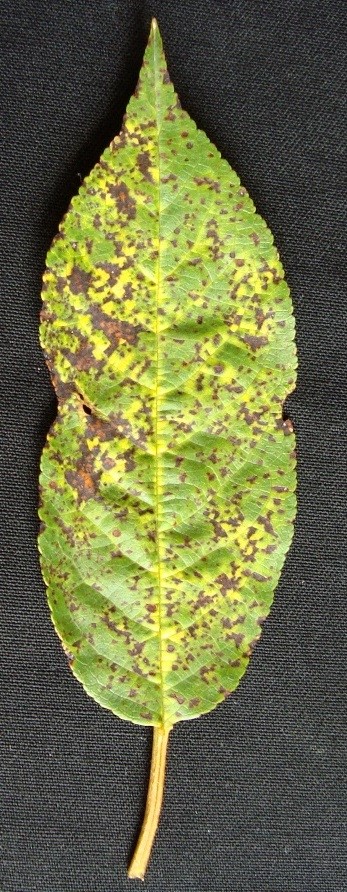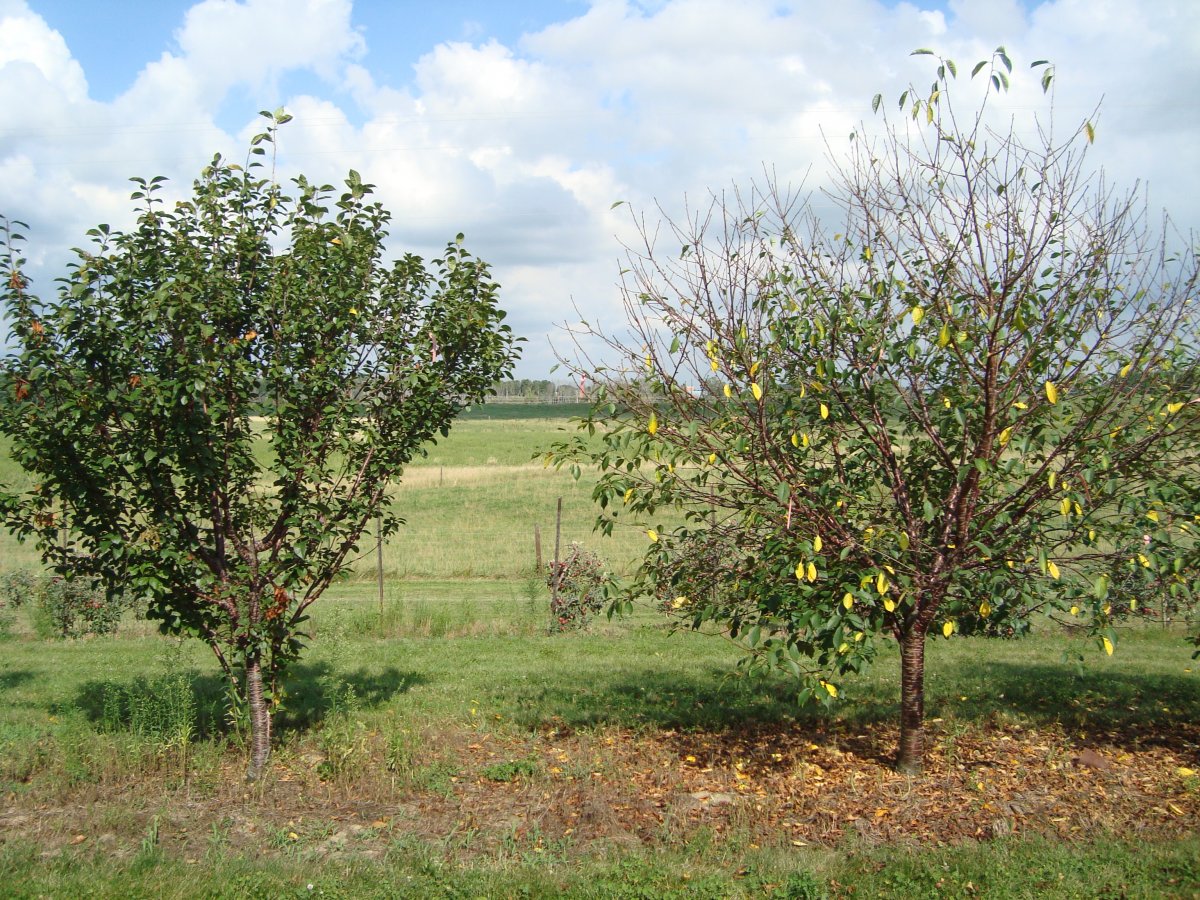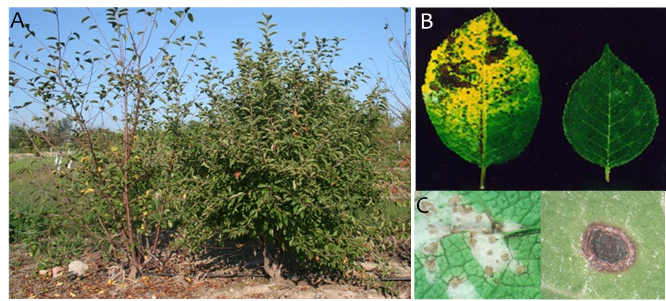
cherry orchards during thegrowing season
(cv. Montmorency). Photo taken July 2015,
K. Andersen.
Mercy Olmstead, Extension Team Leader, UF with Amy Iezzoni, Kristen Andersen, and Audrey Sebolt, MSU
For tart cherry (Prunus cerasus L.), the number one disease nemesis in humid growing regions is cherry leaf spot (CLS), caused by the fungal pathogen Blumeriella jaapii. This disease can be devastating for tart cherry growers, defoliating the entire tree early in the growing season. If defoliation is severe before harvest, fruit will have poor quality characterized by insufficient fruit color, reduced soluble solid concentration, and sunscald. If defoliation continues after harvest (Fig. 1), the trees will have reduced carbohydrates stored, resulting in a loss of coldhardiness that can lead to tree decline and death.

leaf infected by cherry
leaf spot.
Photo: K. Andersen
Disease Symptoms and Control
B. jaapii primarily affects the leaves of tart cherry trees, and the first evidence of infection is small, dark colored spots on young leaves. In a susceptible host, these spots will eventually coalesce and turn brown (Figure 2), often with a yellow halo with white sporulation on the underside of the leaf. The lesions and yellowing will eventually spread over the entire leaf, and infected leaves will fall from the tree. When CLS pressure is severe, fruit pedicels can also become infected. CLS is currently controlled by as many as 8-10 fungicide applications throughout the growing season. However, in many years, achieving good spray coverage in a timely manner can be very challenging, especially because ‘Montmorency’, the major tart cherry cultivar grown in the U.S., is highly susceptible to this fungus.

(left) with good leaf retention compared
to a susceptible cultivar, Montmorency
(right), in an orchard that had not been
controlled for CLS during the growing
season. Photo: K. Andersen, July, 2015
Breeding for Disease Resistance
Resistance and tolerance to CLS in new cultivars is a major goal of the Michigan State University (MSU) tart cherry breeding program. Sources of tolerance (Fig. 3) include the tart cherry cultivar ‘North Star’, sweet cherry cultivars, and some accessions of the wild cherry species P. maackii. In these tolerant sources, the fungus can infect the leaves but disease progression is significantly slower than in a susceptible host, and leaf yellowing and defoliation is delayed. Another wild cherry species, P. canescens, is being used as a source of CLS resistance. In some accessions of this species, the fungus does not establish well in the host and leaf yellowing and abscission does not occur (Figure 4 A-C).
Advances in RosBREED
To date, a major locus underlying the P. canescens-derived CLS resistance has been identified and is being routinely used in the breeding program. A DNA test recently developed for this locus identifies resistant seedlings when they are still in the greenhouse, and seedlings predicted to be susceptible are happily discarded prior to field planting. Additional loci influencing CLS tolerance and resistance from other sources are being uncovered. The MSU breeding program expects to be able to develop new-CLS resistant cultivars that have multiple resistance alleles.
Deliverables to industry? Superior new cultivars with excellent horticultural quality and durable CLS resistance!

Figure 4. (A) Cherry leaf spot (CLS) susceptible cultivar Montmorency (left) and a resistant
MSU selection (right) in an orchard that had not been sprayed to control CLS during the
growing season. Photo was taken July, 2015. (B) ‘Montmorency’ (left) and resistant MSU selection (right).
(C) Microscope images of leaves infected with B. jaapii. The image on the left is of the susceptible cultivar
Montmorency infected with the CLS fungus. The image on the right is a resistant MSU selection
in which the fungus does not establish in the host due to a hypersensitive type host defense response.
